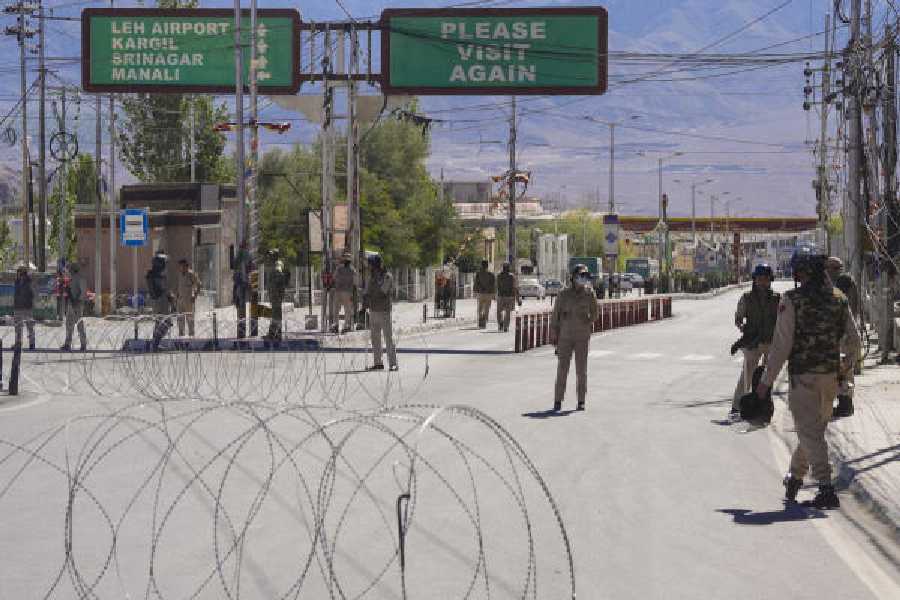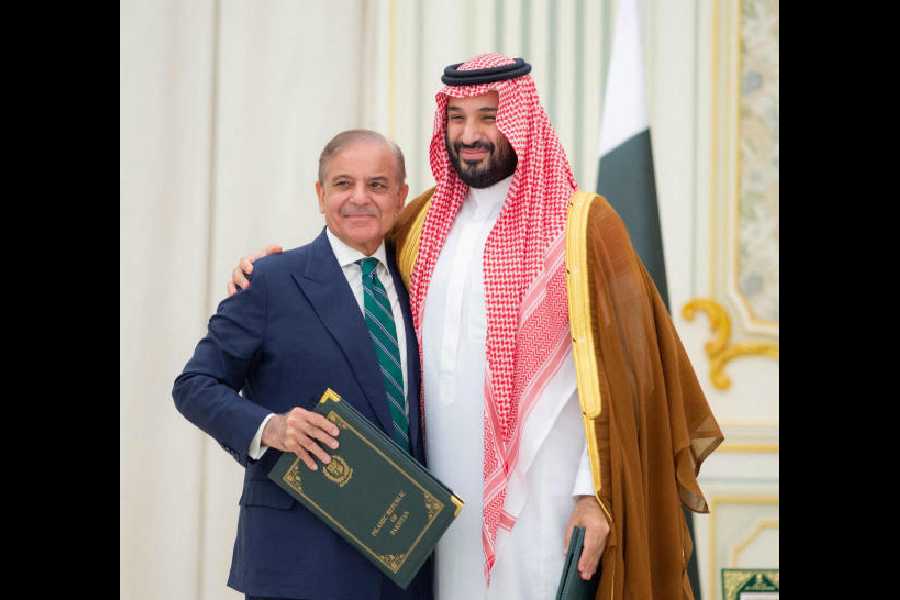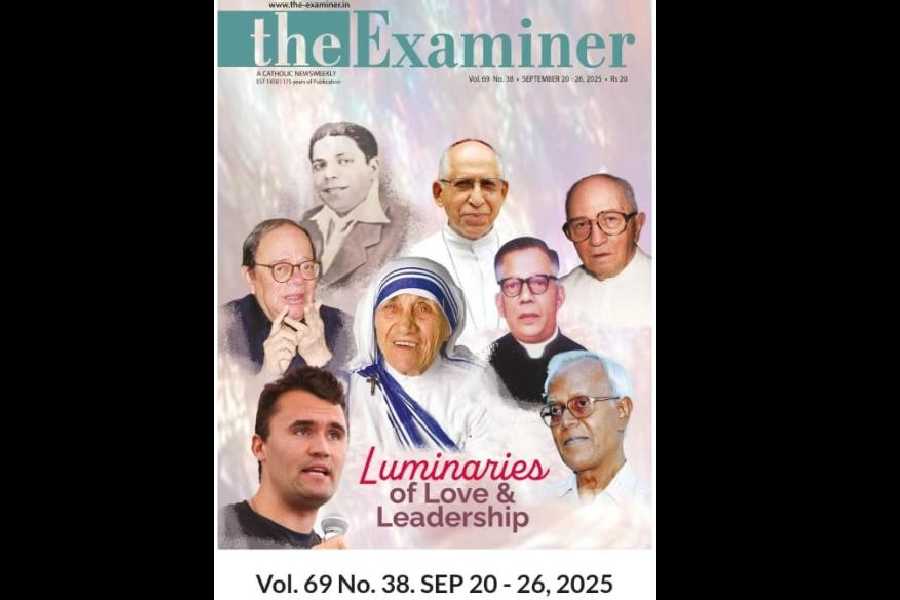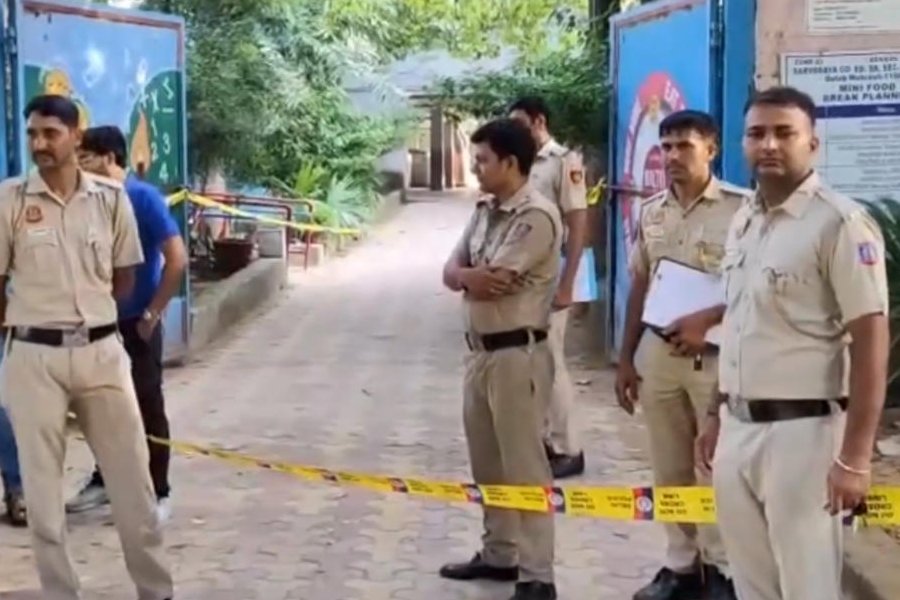 |
| TALK TIME: Abraham Verghese and (below) Mira Nair |
 |
Abraham Verghese: Can I first say what an honour it is to be having this conversation with you?
Mira Nair: Oh! Honour! You and me and honour?
AV: Absolutely!
MN: Thank you. I’m going to make you sing for your supper now!... What was striking to me (about Cutting For Stone) was the shift from non-fiction to fiction. Your non-fiction was so alive and encompassing. I was curious about how or why you went to fiction.
AV: My first love had always been fiction. Actually, I had a short story called Lilac which was published in The New Yorker while I was a student. That was a big break for me. Then the editors at The New Yorker got to know a little bit about my background — that I was a physician who had worked in Tennessee, with HIV — and they seemed interested in a proposal for a non-fictional piece. So I worked very hard … to produce a proposal for them. At that time, The New Yorker paid a dollar a word and I thought 100,000 words was just right for them!
But to make a long story short, for whatever reason, they didn’t buy the proposal, and I was left with a book proposal. So we shopped it around and had a contract for a book. I had never written non-fiction... So I learnt a lot, read a lot of good non-fiction. But I was very anxious to eventually come back to fiction. With non-fiction, you can dramatise, you can rearrange, but you can’t invent… It was liberating to get back to fiction.…
MN: The perennial question that people like us are asked is “What is home?” Your parents emigrated to Africa from India, you grew up in Ethiopia, you attended medical school in India and then you worked in hospitals across the US. Do you call yourself an outsider?
AV: I’m envious of people who do have a hometown that they can go back to. For the longest time I thought my life would be in Ethiopia. My great moment of displacement was when a military coup took all the students and sent them off to the countryside, and got the intellectuals out of town, Cambodian style. But I wasn’t included. I was told that as an “expatriate” I should probably leave. And I had to really figure out that it meant me, and that it meant that I didn’t belong there even though I thought I did. That was a huge moment of disconnection from the place I really loved. And I hope that in this book, my love for the land comes through.
From then on, you’re attached to places, but it’s not “home.” I feel that loss, but I think it’s been a great advantage as a writer, because wherever you go, you have this perspective of an outsider, and this advantage of seeing things that others do not.
May I ask you about home? Where is home for you?
MN: I’m lucky in that I left India to come here (New York) to study when I was 19. I’m very much a north Indian from Delhi. That’s very much my home. Then I met my husband who’s from Uganda, and we made Uganda our home. And I became a gardener. That makes a big difference, you see. When you plant things literally in a soil that you love. Now I have a 19-year-old garden where every sapling I planted are now majestic trees — makes a big difference to that strange feeling of “home.” Now as soon as our son goes to college, we’re going to be spending a third of our time in New York, a third in Uganda and a third in New Delhi... There is a real feeling of home in all these three places.
And now I’ll return to you singing for your supper... How do you manage this hyphenated existence of being a professor of medicine, practising and being at the University of Stanford, and writing a book and (grins mockingly) having Sonny Mehta write you love letters on the first page?
AV: I resist the notion of a doctor and a writer being two separate things. My identity is completely that of a physician. I love what I do, and I think it’s a great privilege to do what I do. And then I write. And the writing comes out I think from that stance of feeling well within the world; like I have a purpose.
MN: You have any specific time when you write?
AV: No! With three boys and a demanding wife there’s no specific time! Whenever I can, I write.
MN: There was another aspect of the book I loved. It was unexpectedly, wildly funny. Humour is a big part of how you see the world, I suppose.
AV: I don’t think of myself as someone who can write funny stuff. But life is funny, and medicine is full of humour… I remember an anatomy professor who once asked a female student which had more muscle, the bladder or the uterus. And she thought it was a trick question so she said ‘bladder.’ And he said ‘Young lady, if the bladder had as much muscle as the uterus, you could piss right over this building! There’s rip-roaring humour in medicine.
MN: Speaking of which, have you seen Munna Bhai MBBS?
AV: Mmm, no.
MN: You haven’t! Where are you living, in Stanford? You must see this movie, which I actually bought the rights of and am now turning into a Hollywood film called Gangsta MD. That’s one of the projects I’m doing now with Chris Tucker. That’s a hilarious film about medical humour, so I’m going to send it to you.
(This is an excerpt from a conversation between Abraham Verghese and Mira Nair at an event organised by the Asia Society in New York on February 11.)










